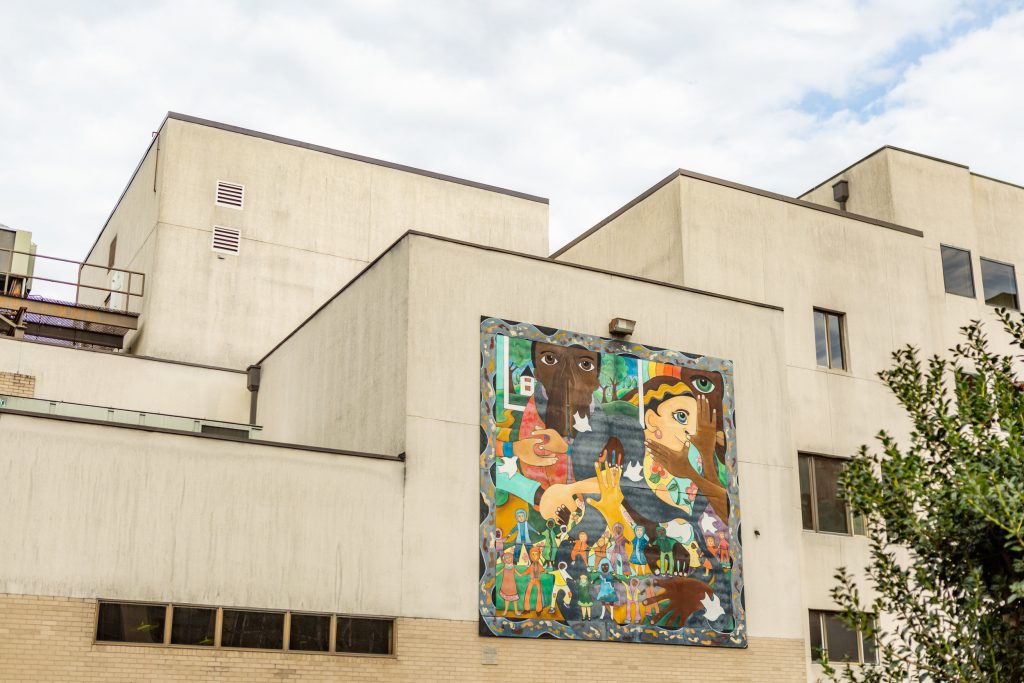
Just a few blocks from the east side of downtown Houston is the cultural home of a longstanding and historic Mexican-American community. Walls are decorated with murals that recount their history. Across town, just west of the first interstate loop is a small commercial district named the Mahatma Gandhi District, an official title granted by the city in 2010. Go a few miles further west down Bellaire Boulevard, and the street signs eventually turn into Chinese.
Further still and the shops and restaurant signs all switch to Vietnamese as you come upon a large statue of a South Vietnamese soldier fighting alongside an American, a tribute by the large Vietnamese community here. Notably, Houston was one of the largest recipient cities of refugees after the Vietnam war. Continue driving, and you will run across countless mosques, Buddhist and Hindu temples, and neighborhoods where English is barely spoken.
Admittedly, Houston is an extreme example, considering it is the most diverse city in the United States, but I use it to demonstrate a reality that is increasingly true across North America — cities much smaller than Houston are becoming hubs of international peoples. In 2019, church ministry looks very different than it did only a few generations ago for many, and it’s bringing a concept to the forefront of North American missions: diaspora.
What is a diaspora?
The term is new to many, but it has some old roots. In fact, diaspora is a Bible term that means to scatter, like spreading seed across the ground. In the New Testament, it is the term used to identify communities of Jewish people scattered around the Mediterranean. The Jewish diaspora plays a prominent role in the New Testament. We see members of the diaspora returning to Jerusalem for Passover in Acts 2, gathering for Pentecost. As Acts continues, we find the Jewish diaspora communities taking pride of place in Paul’s international church planting endeavors. Often, Paul’s missionary teams would stop first at the local synagogue in a town in order to proclaim the good news that the Messiah had come (Acts 17:2).
Since biblical times, the term diaspora has broadened to apply to any group of ethnic people that lives outside of their native land. Anthropologists and sociologists have adopted the terminology, and if you read carefully you will see it in the news. In fact, diaspora populations are a hot topic today, because immigration is a hot topic today. On a global scale, there are more people moving from one country to another than any other point in recorded history. And of all the countries in the world, the United States has the most foreign-born residents. This means that cities across the United States are developing their own communities of diaspora ethnic groups, just like I mentioned here in Houston.
The swell of migration within the last generation creates new missional opportunities for the church as it seeks to fulfill the Great Commission. In this regard, a relatively new field of mission studies has emerged alongside the uptick in global migration. According to Chandler Im and Tereso Casiño, “diaspora missiology refers to the study of the geographic or demographic mobility of people in various parts of the globe viewed through the lens of God’s redemptive plan for ‘all nations’ (panta ta ethne). It also refers to the exploration of how the body of Christ can participate in this redemptive purpose and work” (Im & Casino, Global Diasporas and Mission). For the local church in North America, these diaspora groups should be a big deal.
How does diaspora missions differ from regular missions?
Working with a minority people instead of working with a majority people in their home context changes things. In traditional cross-cultural missions, the missionary enters the home world of the group he or she is trying to engage with the gospel. They are the cultural outsider attempting to contextualize as a minority in their new setting. Most often, this relationship is flipped in diaspora missions.
Additionally, diaspora groups exist in a “third culture.” As diaspora groups are uprooted from their home culture, they are introduced to other cultures and eventually the majority culture of their new home. This will influence the diaspora group and begin to create a third culture. Effective missions to these groups will require fresh contextualization and cannot merely be based on assumptions from their host culture.
Finally, many of these diaspora groups (most in the United States), are actually Christian in background. In this regard, local churches should not assume all immigrant groups are objects of evangelistic missions but realize that many are new partners in mission.
Why is this important?
The last two decades have created a “such a time as this” moment for the church in North America concerning the Great Commission. Many of the least reached peoples are now within arm’s reach of our churches. By reaching them here, we may be able to engage them back at home. Furthermore, global migration brings us Christian voices from around the world. If we learn to partner with these brothers and sisters in Christ, our churches in North America will only benefit from their diverse expressions of the gospel.
This article originally appeared at the SEBTS GCS blog.

















